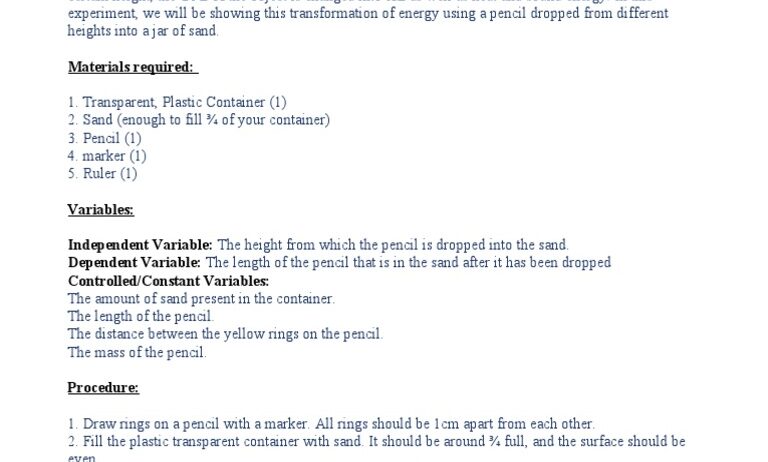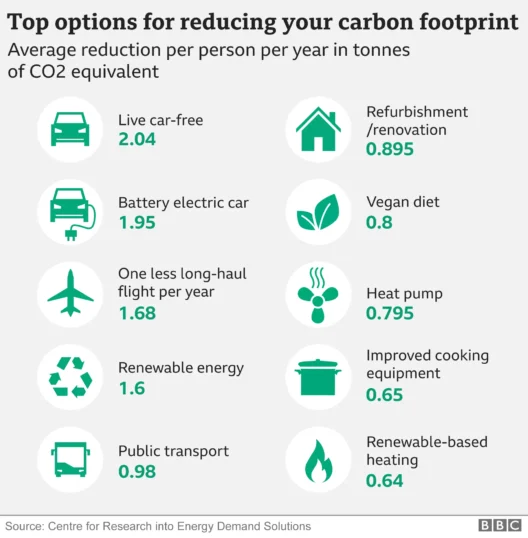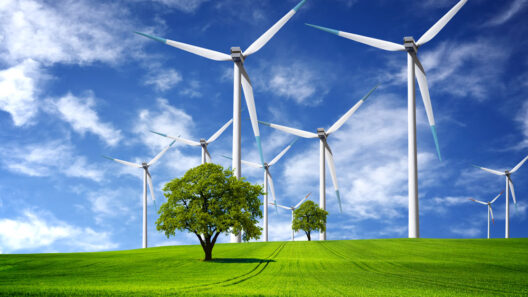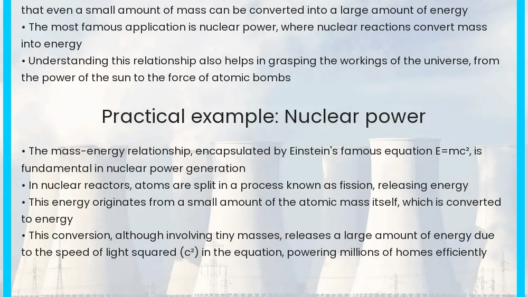Understanding the intricacies of energy is paramount for both scientific comprehension and everyday applications. One of the most fundamental principles in physics is the Law of Conservation of Energy. This principle has profound implications in not just the scientific realm but also in the practicalities of how we use energy in our daily lives. Herein, we will delve deep into what the Law of Conservation of Energy states, its various manifestations, and its significance.
What is the Law of Conservation of Energy?
The Law of Conservation of Energy posits that energy cannot be created or destroyed; it can only change forms. This principle holds true in any closed system, where the total energy remains constant over time. It can shift between kinetic energy, potential energy, thermal energy, and several other forms, but the aggregate amount of energy stays the same. In simple terms, if you start with a certain amount of energy within a system, you will end with that same amount, albeit in a different form.
The implications of this law are massive. It lays the groundwork for understanding various natural phenomena, as well as guiding many technological applications that rely on energy transformations. Whether it’s converting solar energy into electricity or transforming chemical energy during combustion, this principle remains a critical undercurrent.
The Role of Energy Forms in the Conservation Law
Underpinning the Law of Conservation of Energy are different forms of energy that play a crucial role in the universe’s mechanics. Recognizing these forms not only satisfies academic curiosity but also informs practical applications in engineering, environmental science, and technology.
Kinetic Energy
Kinetic energy is the energy of motion. Any object in motion, whether it be a car zooming down the highway or the wind rustling through the trees, possesses kinetic energy. This form is particularly relevant when discussing energy transformation since kinetic energy often results from converting potential energy. For instance, a roller coaster at the highest point contains potential energy that converts to kinetic energy as it descends.
Potential Energy
Potential energy, on the other hand, is energy stored within an object, depending on its position or condition. A classic example is a rock perched atop a hill—the higher the rock, the more potential energy it possesses. When it tumbles down the hill, that stored energy transitions into kinetic energy, further illustrating the conservation principle.
Electrical and Thermal Energy
In contemporary society, electrical energy is perhaps the most utilized form. Generated from other energy sources, it powers our homes and industries. Similarly, thermal energy, stemming from the movement of particles within a substance, plays a pivotal role in everything from weather patterns to cooking methods.
The interplay among these energy forms exemplifies the Law of Conservation of Energy. Every time energy shifts from one form to another, the total energy remains unchanged, successfully demonstrating this law’s universality.
Real-World Applications of Energy Conservation
The Law of Conservation of Energy is not merely an abstract mathematical concept; it tangibly affects various industries and practices. Its implications can be seen in technology, automotive engineering, renewable energy, and even ecological conservation efforts.
Renewable Energy Technologies
The surge towards renewable energy technologies is largely fueled by the understanding of this conservation law. Solar panels, for instance, showcase the transformation of solar energy into electrical energy. Not only do these technologies provide sustainable energy solutions, but they also capitalize on the principle of energy conservation by optimizing the conversion processes.
Energy Efficiency in Homes
Individuals can also apply the law in their everyday lives. Energy efficiency practices—like utilizing energy-efficient appliances or optimizing insulation—are grounded in the understanding of conserving energy. When households reduce their energy consumption, they effectively demonstrate the Law of Conservation of Energy by using less energy without diminishing the quality of their daily lives.
The Automotive Industry
The significance of energy conservation extends to the automotive realm, where manufacturers are increasingly integrating electric and hybrid vehicles. By converting chemical energy to kinetic energy more efficiently, these vehicles embody the principle of energy conservation, leading not only to improved fuel efficiency but also to reduced environmental impact.
Global Implications of Energy Conservation
At a larger scale, the Law of Conservation of Energy intersects with global challenges such as climate change and sustainability. By recognizing that energy forms can transform but not disappear, countries can develop better policies for energy usage, encourage research into more efficient systems, and promote renewable energy sources. This holistic understanding can facilitate a transition towards sustainable practices, ultimately safeguarding the environment for future generations.
In conclusion, the Law of Conservation of Energy is a foundational principle underlining various aspects of both the physical world and human innovation. This principle illuminates the mechanics of how energy operates and transforms within our universe, revealing its indispensable role in shaping technology, promoting sustainability, and enhancing our day-to-day experiences. By grasping and applying this law, we can navigate toward more efficient and sustainable energy practices, ultimately benefiting both society and the environment.








